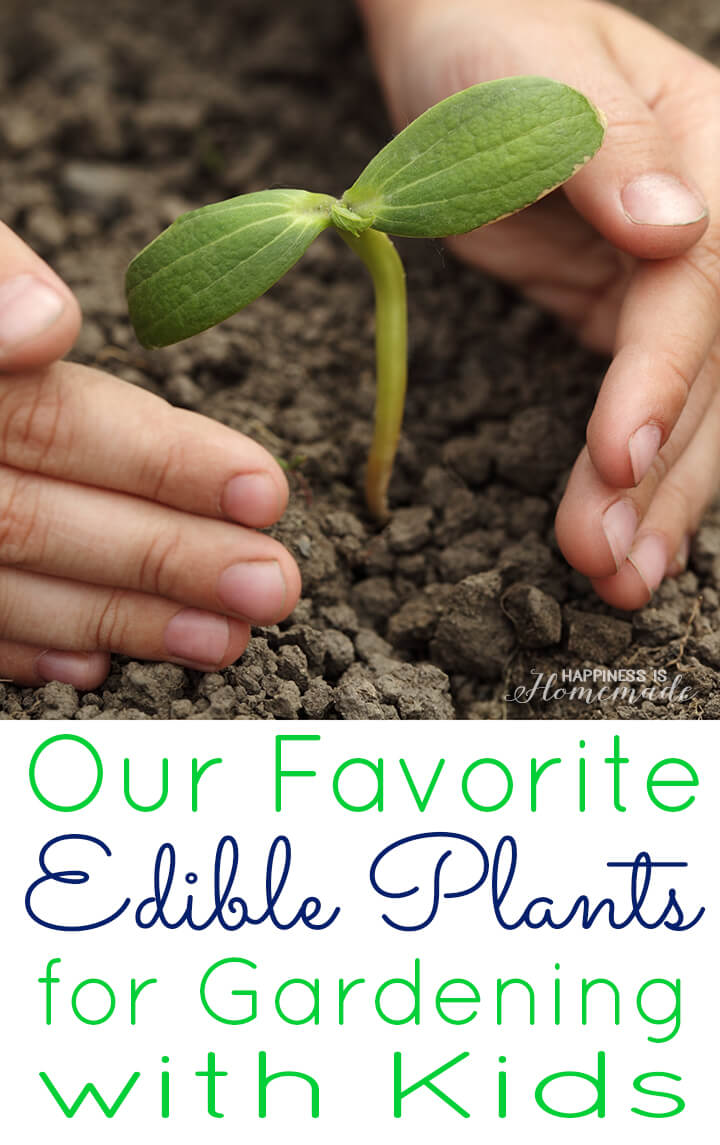Get the most out of your family’s garden this year with Monrovia plants!
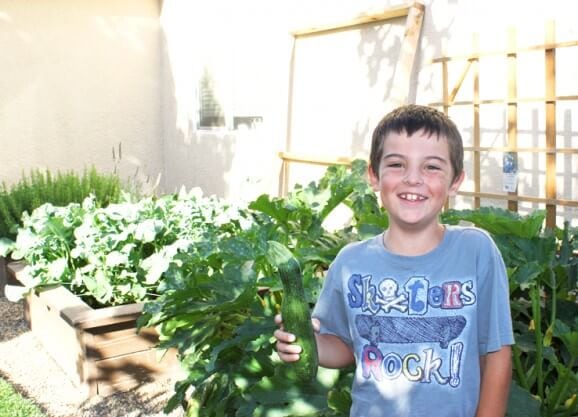 Gardening is a great way to teach your children about where their food comes from. It takes a good deal of nurturing and patience to grow your own food, and there are many lessons to be learned along the way. Children love watching their plants grow, and with the time and care invested they also learn gratitude and the important values of the foods that we set upon our table. We have grown a family garden for the past ten years and have gone through many different trials, techniques and inevitable failures that have led us to where we are today.
Gardening is a great way to teach your children about where their food comes from. It takes a good deal of nurturing and patience to grow your own food, and there are many lessons to be learned along the way. Children love watching their plants grow, and with the time and care invested they also learn gratitude and the important values of the foods that we set upon our table. We have grown a family garden for the past ten years and have gone through many different trials, techniques and inevitable failures that have led us to where we are today.
Today we have a thriving garden full of our favorite fruits and vegetables, and we’re sharing some of our favorite plants for gardening with kids. Start by discovering which planting zone you live you (we are in Zone 9 – Northern California) and using the following information as a guideline for helping you choose which plants to include in your children’s garden.
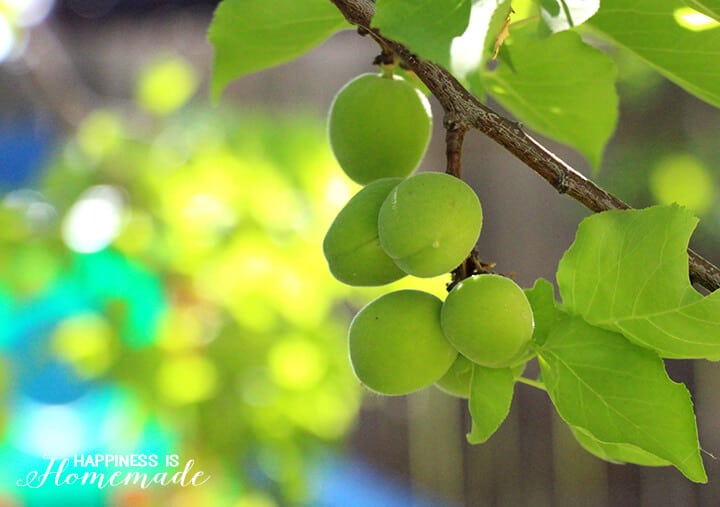 If you have the space available, fruit trees are an easy way to introduce edibles into your landscape. Trees require annual trimming and fertilizing along with routine watering, but in my experience I’ve found that caring for fruit trees is simpler than caring for our full vegetable garden. Most varieties take several years before they will start producing fruit, but if you purchase a larger (and likely older) tree from your local nursery it may begin producing fruit as early as the first year it is planted. We were pleasantly surprised when our apricot tree produced a large harvest its very first year, and grew nearly ten times its size in just under a year! We currently have apricot and nectarine trees, and we’re sprouting grapefruit and Meyer lemon seeds that will be large enough to plant soon.
If you have the space available, fruit trees are an easy way to introduce edibles into your landscape. Trees require annual trimming and fertilizing along with routine watering, but in my experience I’ve found that caring for fruit trees is simpler than caring for our full vegetable garden. Most varieties take several years before they will start producing fruit, but if you purchase a larger (and likely older) tree from your local nursery it may begin producing fruit as early as the first year it is planted. We were pleasantly surprised when our apricot tree produced a large harvest its very first year, and grew nearly ten times its size in just under a year! We currently have apricot and nectarine trees, and we’re sprouting grapefruit and Meyer lemon seeds that will be large enough to plant soon.
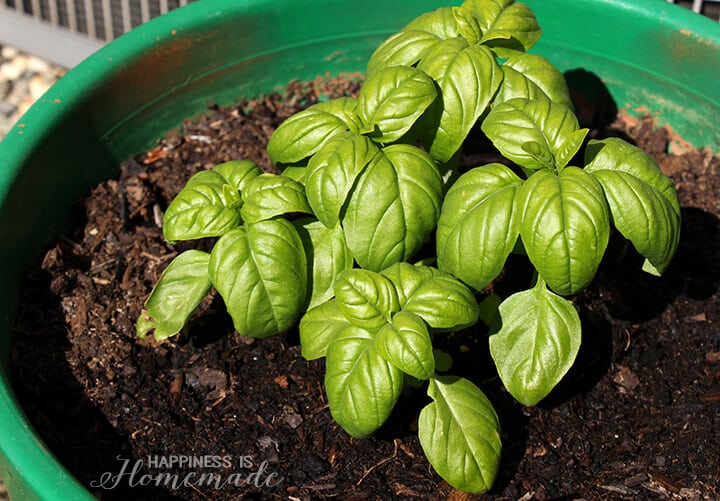 If the idea of starting a large garden seems overwhelming, start with herbs! Herbs can be grown both indoors and outdoors from seeds or seedlings, and the size of the plant is generally determined by the size of the container that they are planted in. Small flowerpots work well for indoor gardens and will produce window sill sized plants; however, planting those same plants directly into the ground or a large garden bed can result in shrubbery-sized plants. I’ve found that rosemary and basil both have the tendency to become overgrown quickly in our garden if they are given too much space, so I plant them both in large flower pots instead of the garden beds. Both plants thrive on being used and will actually grow more after you trim it! We currently grow basil, rosemary, chives, parsley and dill in our herb garden.
If the idea of starting a large garden seems overwhelming, start with herbs! Herbs can be grown both indoors and outdoors from seeds or seedlings, and the size of the plant is generally determined by the size of the container that they are planted in. Small flowerpots work well for indoor gardens and will produce window sill sized plants; however, planting those same plants directly into the ground or a large garden bed can result in shrubbery-sized plants. I’ve found that rosemary and basil both have the tendency to become overgrown quickly in our garden if they are given too much space, so I plant them both in large flower pots instead of the garden beds. Both plants thrive on being used and will actually grow more after you trim it! We currently grow basil, rosemary, chives, parsley and dill in our herb garden.
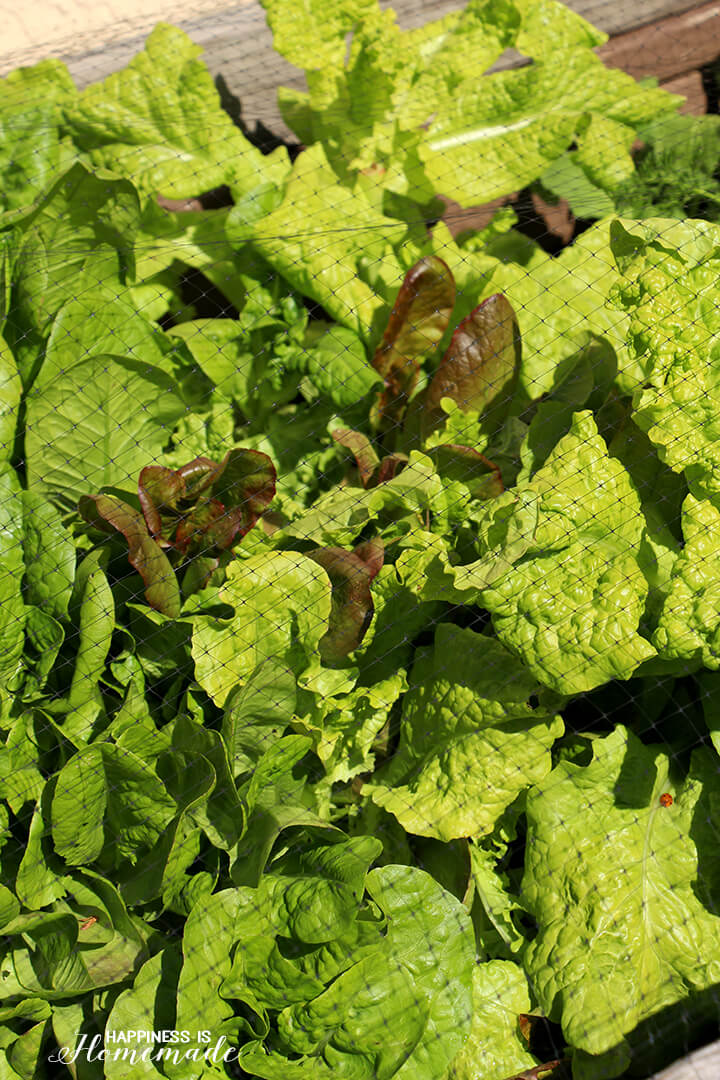 Greens are a garden staple, and they grow rather quickly (maturing in about 40-60 days). We sow spinach and mixed lettuce seeds directly into the garden bed after the last frost of winter, and they begin to sprout in about a week. As long as there is ample moisture in the air, we are able to leave the seedlings alone to grow without any intervention aside from a light weekly watering. We cover our greenery bed with soft netting (made for fruit trees) to keep pests such as birds, snails and neighborhood cats out. This garden bed here is home to a variety of mixed lettuces, spinach, carrots and radishes.
Greens are a garden staple, and they grow rather quickly (maturing in about 40-60 days). We sow spinach and mixed lettuce seeds directly into the garden bed after the last frost of winter, and they begin to sprout in about a week. As long as there is ample moisture in the air, we are able to leave the seedlings alone to grow without any intervention aside from a light weekly watering. We cover our greenery bed with soft netting (made for fruit trees) to keep pests such as birds, snails and neighborhood cats out. This garden bed here is home to a variety of mixed lettuces, spinach, carrots and radishes.
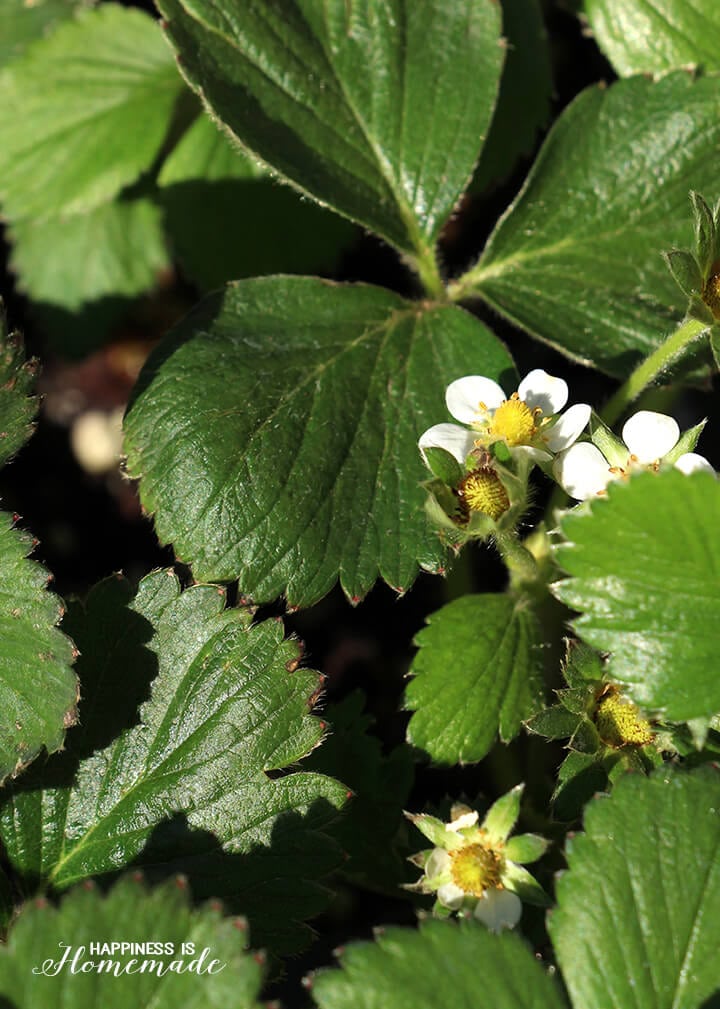 Strawberries are another kid-friendly garden favorite and a great way to start connecting children with the idea of growing their own food. There is nothing better than the taste of a ripe and juicy strawberry fresh from the garden, and we quickly discovered that strawberries were the “gateway plant” that encouraged our children to taste other homegrown fruits and vegetables. My kids still think “store lettuce” is yucky, but they’ll happily eat a taco salad made with our homegrown lettuce.
Strawberries are another kid-friendly garden favorite and a great way to start connecting children with the idea of growing their own food. There is nothing better than the taste of a ripe and juicy strawberry fresh from the garden, and we quickly discovered that strawberries were the “gateway plant” that encouraged our children to taste other homegrown fruits and vegetables. My kids still think “store lettuce” is yucky, but they’ll happily eat a taco salad made with our homegrown lettuce.
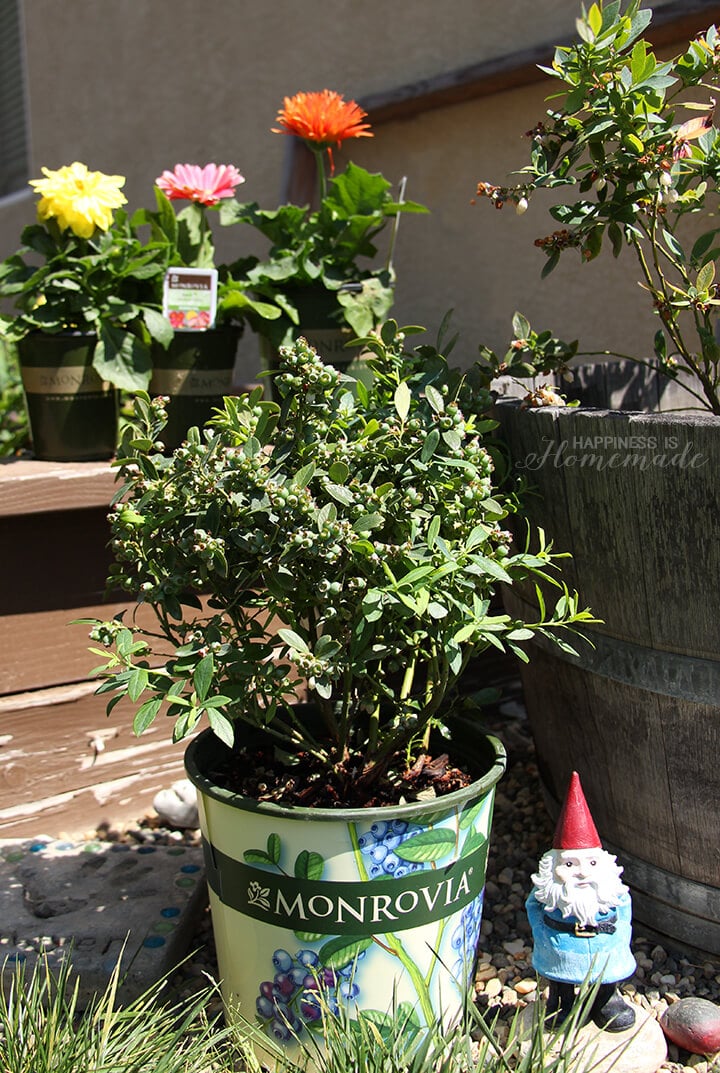 Our four-year-old is a blueberry fanatic, so this year we added two more Monrovia blueberry bushes to our yard. Blueberries are picky about their soil (they prefer an acidic 4-5 pH soil), so we have our blueberry plants in either a half barrel planter or directly in the ground where I can control the soil environment without worrying about affecting the surrounding plants. This also ensures that they will have lots of room to grow to their full potential. I often use leftover coffee grounds to help acidify the soil in the area – simply use the grounds as mulch (no thicker than a 1/2″ layer) or toss them into a watering can with the water once a week for an acidic feeding.
Our four-year-old is a blueberry fanatic, so this year we added two more Monrovia blueberry bushes to our yard. Blueberries are picky about their soil (they prefer an acidic 4-5 pH soil), so we have our blueberry plants in either a half barrel planter or directly in the ground where I can control the soil environment without worrying about affecting the surrounding plants. This also ensures that they will have lots of room to grow to their full potential. I often use leftover coffee grounds to help acidify the soil in the area – simply use the grounds as mulch (no thicker than a 1/2″ layer) or toss them into a watering can with the water once a week for an acidic feeding.
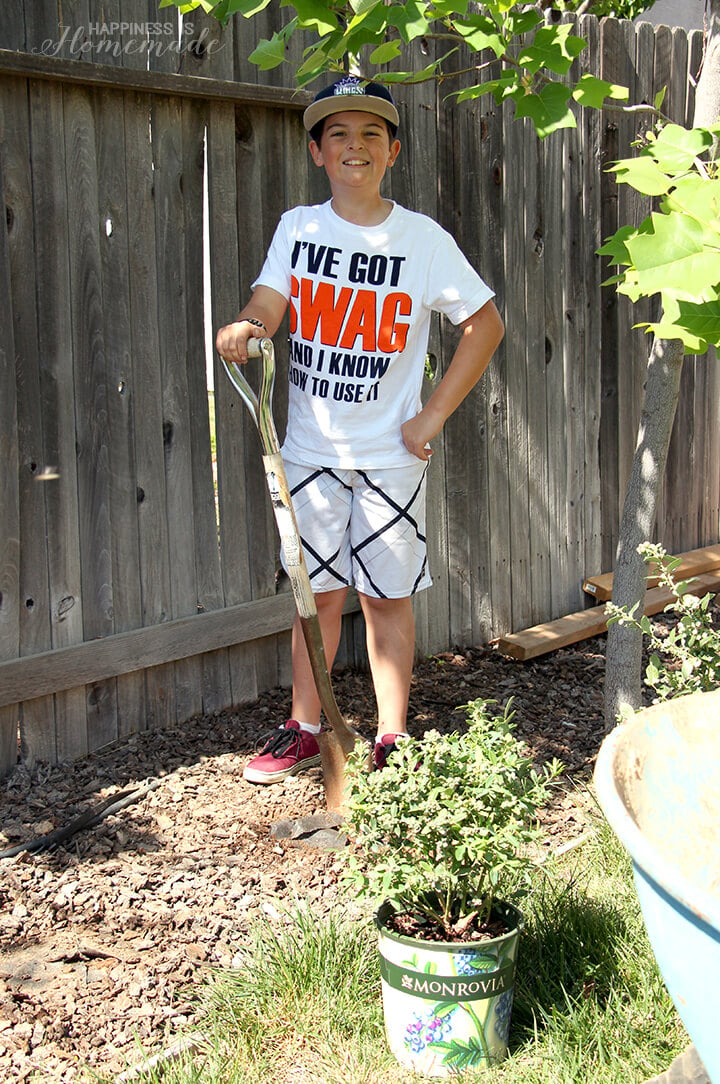 After years of helping out in the garden, my kiddos are now eager garden pros! This was our first time planting blueberries directly into the ground, so we’re all anxious to see how our first crop will turn out. Right now there are TONS of little blueberries on the bush, so we’re very optimistic that we’ll have a great harvest this year!
After years of helping out in the garden, my kiddos are now eager garden pros! This was our first time planting blueberries directly into the ground, so we’re all anxious to see how our first crop will turn out. Right now there are TONS of little blueberries on the bush, so we’re very optimistic that we’ll have a great harvest this year!
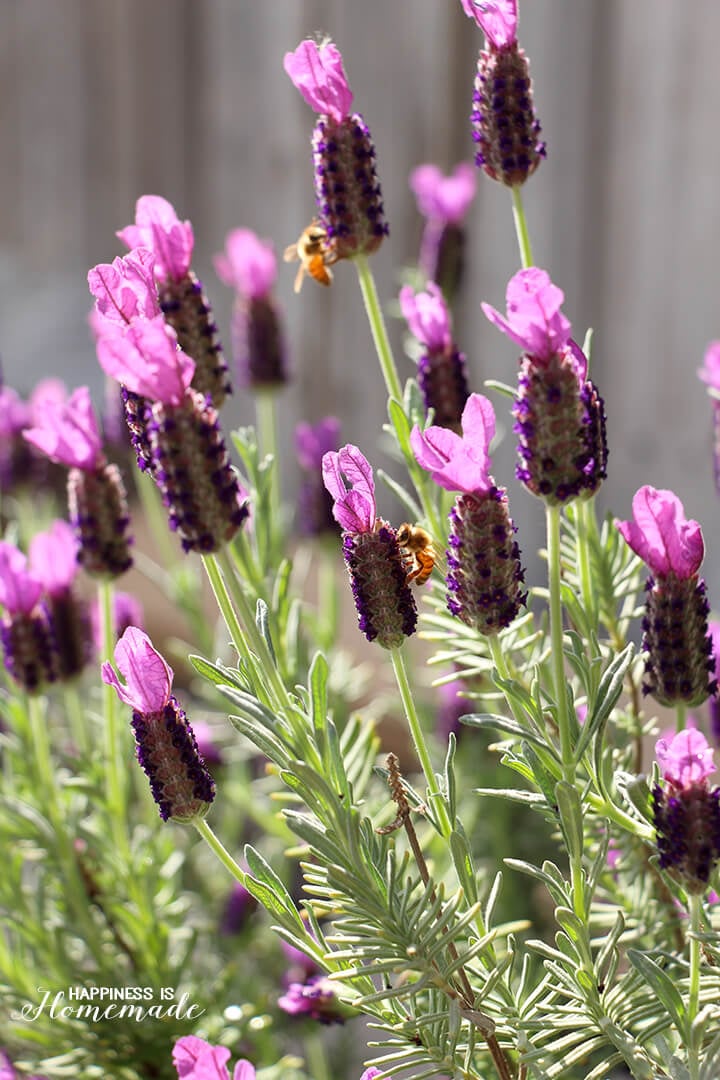 Of course, if you’re planting an edible garden, you’ll also want to include flowers that attract pollinators like bees and butterflies. This lavender bush is near our new blueberry bushes and our strawberry bed.
Of course, if you’re planting an edible garden, you’ll also want to include flowers that attract pollinators like bees and butterflies. This lavender bush is near our new blueberry bushes and our strawberry bed.
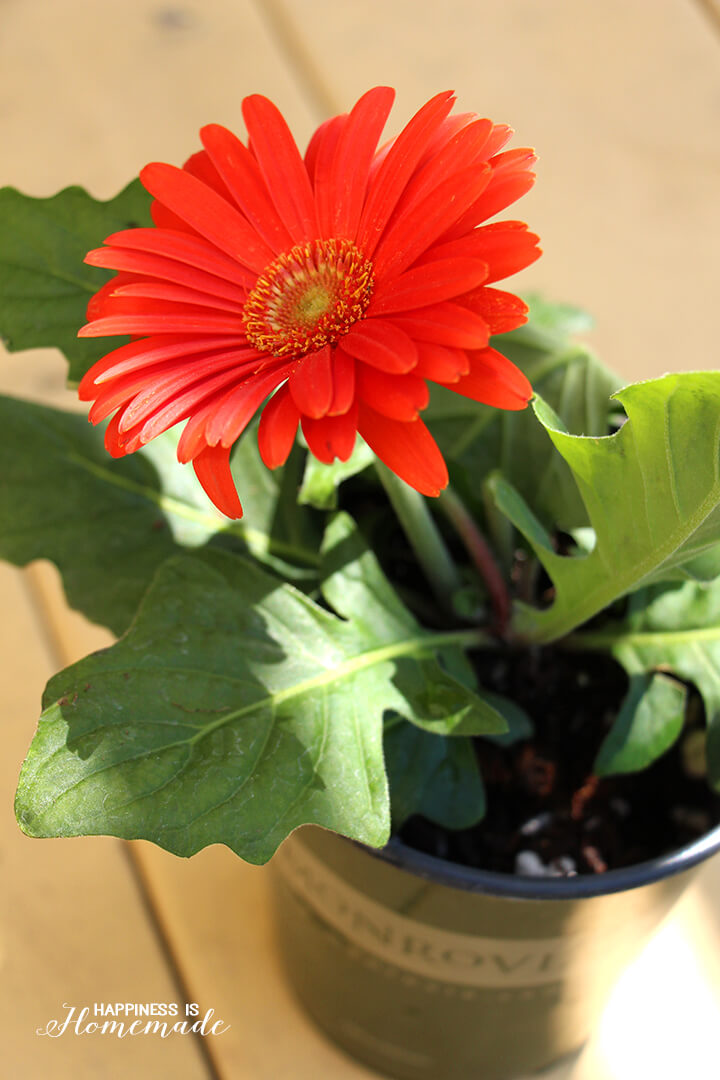 I couldn’t resist adding some colorful cheery gerbera daisies to our flower bed, too!
I couldn’t resist adding some colorful cheery gerbera daisies to our flower bed, too!
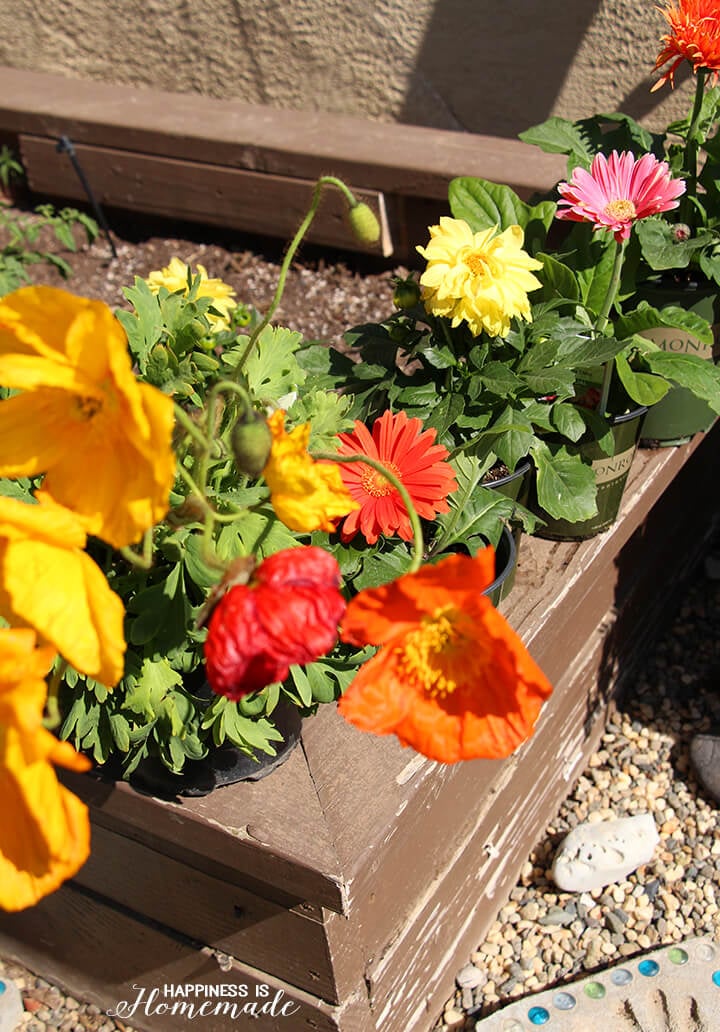 (I actually couldn’t resist getting a lot of pretty flowers that day! These are going into new window boxes that we are making for our front porch.)
(I actually couldn’t resist getting a lot of pretty flowers that day! These are going into new window boxes that we are making for our front porch.)
Our garden provides food for our family, flowers for our table, and lots of valuable life lessons along the way. Here’s a full list of our favorite edible plants that we grow each year:
- Strawberries
- Blueberries
- Lettuce
- Carrots
- Herbs
- Tomatoes
- Bell Peppers
- Squash – Zucchini and Yellow
- Cucumbers
- Sugar Snap Peas
- Pumpkins
- Sunflowers
We have also grown melons, corn, broccoli, cauliflower, green beans, rainbow chard, hot peppers, wheat and more; however, the list above represents the plants that we MUST HAVE every year.
Click here to find a garden center or Lowe’s store in your area that carries Monrovia plants or shop online!

Heidi Kundin has captivated the hearts of millions with her colorful and inspiring approach to crafting, celebrations, and family fun. With over 15 years of experience, Happiness is Homemade has become a must-visit destination for those seeking quick and easy creative ideas and last-minute solutions. Heidi’s warm personality shines through her posts, inviting readers to join her on a creative journey that’s fun, rewarding, and achievable. Heidi is also the author of Homemade Bath Bombs & More and DIY Tie-Dye.


